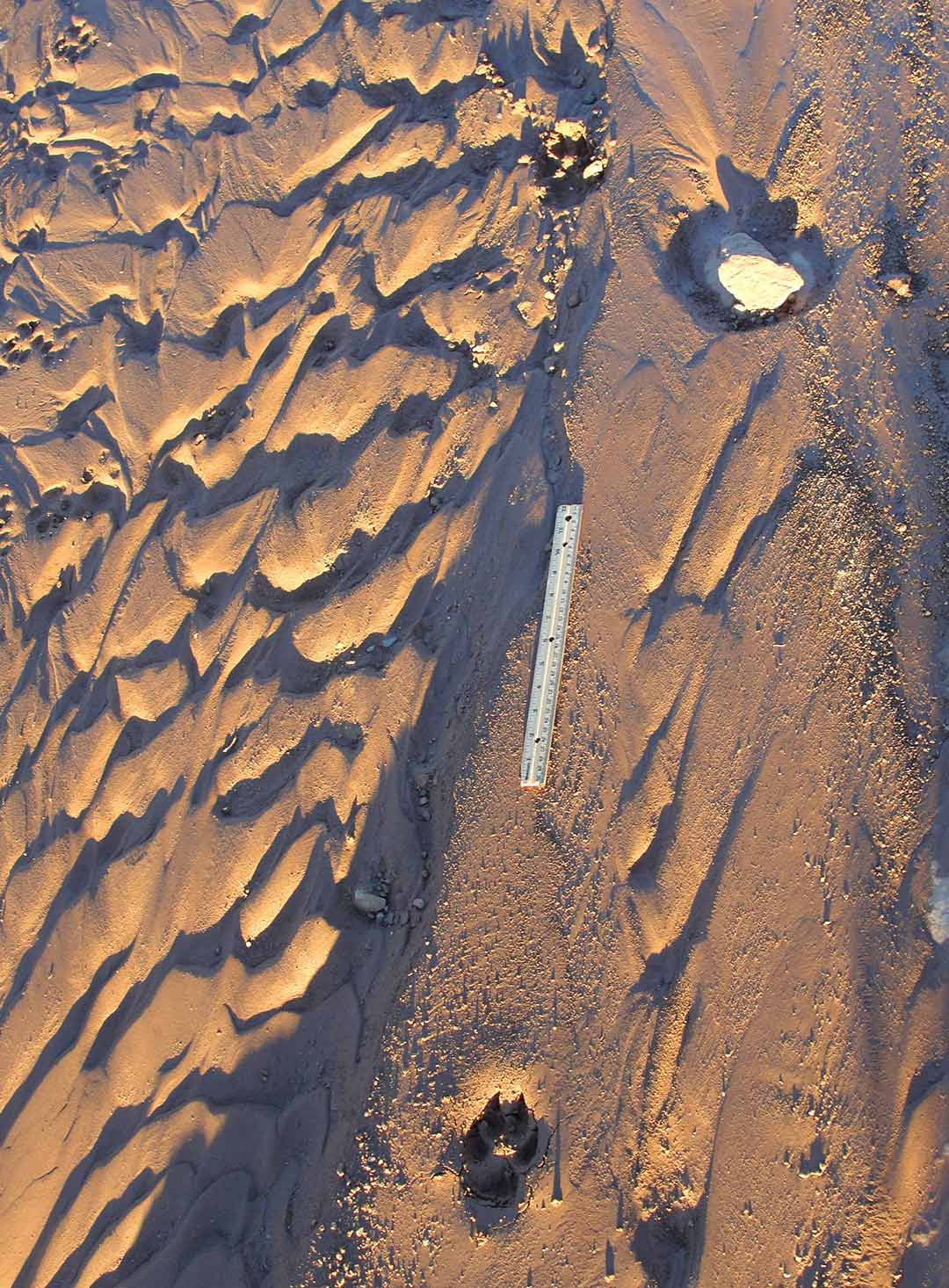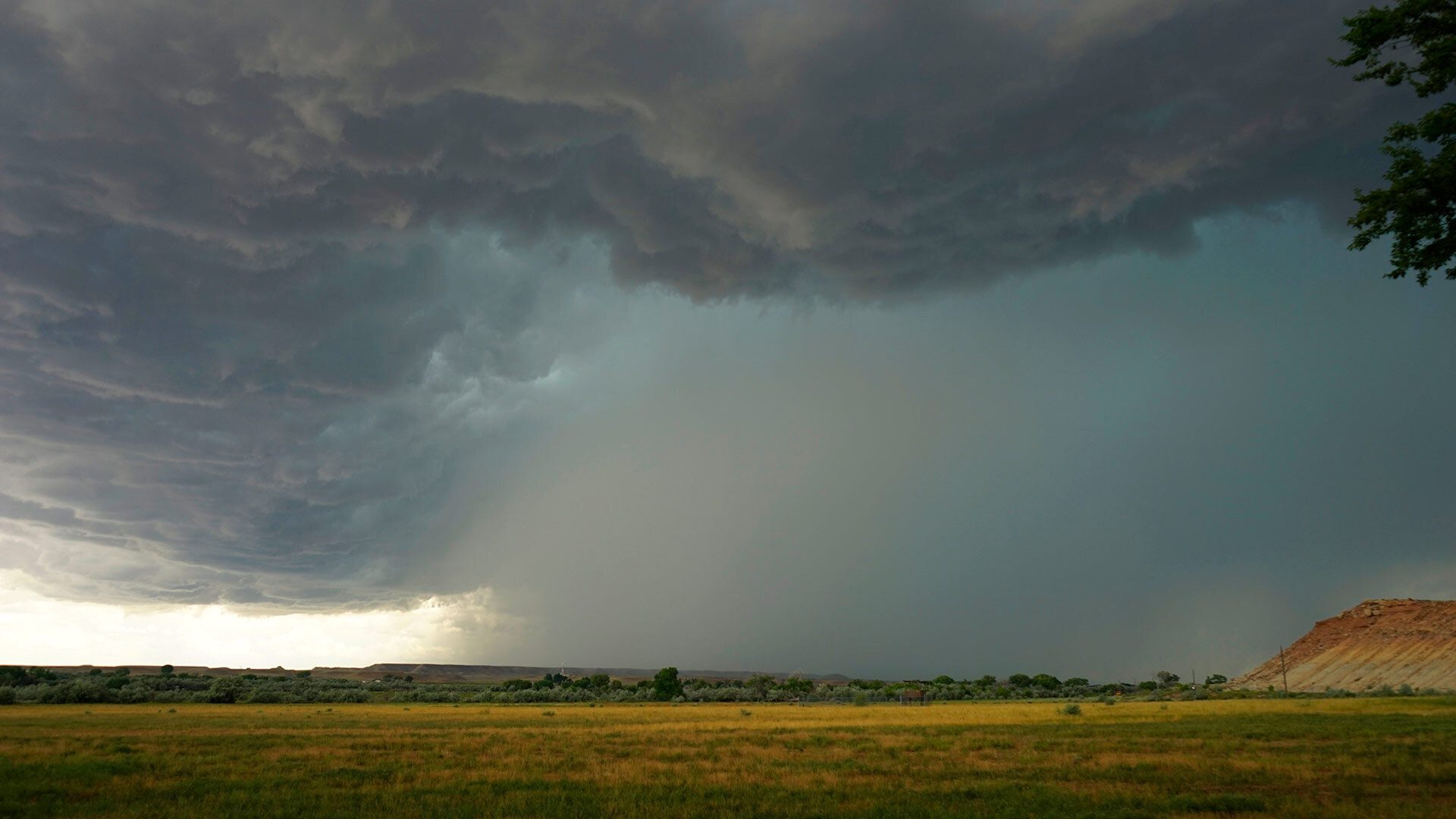- September 17, 2020
- By Sala Levin ’10
In the Uinta Basin of eastern Utah, among the red mesas and wide-open stretches of land, unusual happenings have been part of the local fabric for years—maybe even centuries. Large wolf-like creatures that seem impervious to gunshots. Noises with no apparent source. Reports of unidentified flying objects.
Now, the University of Maryland Art Gallery is home to a glimpse of the area’s mysterious Skinwalker Ranch, thanks to a donation of more than 1,500 images from photographer Christopher Bartel, who worked at the ranch from 2010 to 2016 as a security officer.
The photographs, which will be available online to people affiliated with a university or museum, are a peek into a place people may have “read about and researched but never really seen,” said Taras Matla, associate director of the gallery.
An in-person exhibition is planned for early 2021, contingent upon COVID-19 guidance and regulations.
 “I appreciate the incredible platform the UMD Art Gallery is providing me with,” said Bartel. “I am beyond thrilled to publicly share my vision and past experiences during my time at Skinwalker Ranch. It’s beyond humbling.”
“I appreciate the incredible platform the UMD Art Gallery is providing me with,” said Bartel. “I am beyond thrilled to publicly share my vision and past experiences during my time at Skinwalker Ranch. It’s beyond humbling.”
Located on land once claimed by both the Navajo and Ute people that’s now part of the Ute Uintah and Ouray Reservation, the roughly 500-acre Skinwalker Ranch takes its name from the Navajo word “skinwalker,” which refers to a shapeshifting entity.
The ranch has reportedly been home to government-funded research projects on unidentified flying objects and other not-easily-explained phenomena. Films, cable television shows, news articles and more have told bizarre stories of cattle mutilations, crop circles, strange lights and more.
Bartel’s photographs are valuable not just because of the ranch’s flirtations with the paranormal, said Matla. They also recall a tradition of photography of the American West, made famous by 19th- and 20th-century artists like Ansel Adams, Carleton Watkins and William Henry Jackson. (The UMD Art Gallery also holds some of Jackson’s work.)
These photographers brought viewers closer to places like Yosemite and Yellowstone National Parks, allowing them to see cliffs, geysers and valleys they likely never would have otherwise. Like them, Matla noted, Bartel allows observers “an entry point to be able to see some beautiful landscape” that’s generally inaccessible.
Bartel is a practitioner of what’s known as outsider art, meaning art produced by “somebody who doesn’t have formal training but has done it for decades to the point that they’ve achieved mastery,” said Matla. His understanding of light, composition and layout offers a new perspective on the Western landscape.
Taken a century or so after some of the most iconic images of the vast West, Bartel’s photographs “help us connect the dots in terms of environment, ecology and cultural history,” Matla said.
Topics
Arts & CultureTags
Visual Arts